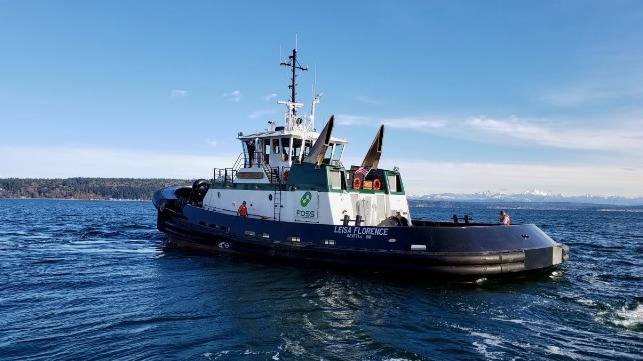Foss Builds First U.S. Tug With Autonomous Capabilities

Leading U.S. tug and logistics operator Foss Maritime is installing an autonomous control system aboard its latest tug, the Rachael Allen. The new ASD harbor tug will be the first in the United States to integrate autonomous systems into real-world commercial operations, and it marks a significant milestone for the small but growing class of autonomy-equipped workboats on the global market.
The system will be provided by Sea Machines Robotics, a Boston-based vessel autonomy startup. The 90 ton bollard pull tug will be the most powerful vessel that Sea Machines has ever outfitted.
When completed, this high-spec tug will be deployed in California, where it will provide tanker escort and ship assist services for vessels of any size class.
Even aboard manned vessels, autonomous technologies can streamline manual, repetitive tasks, allowing the crew to focus on higher-level operations. The Sea Machines SM300 system will give the Rachael Allen the capability for autonomous transit navigation, as well as remote access of the tugboat’s on-board machinery – a feature that will allow crewmembers and shoreside employees to manage and control equipment remotely. The SM300 can detect and avoid obstacles on its own while under way, reducing risk for the crew and the owner.
The Rachael Allen will be delivered with the SM300 and supporting hardware installed, and Foss and Sea Machines will gradually activate its capabilities in a series of phases over a six to nine-month period. According to Sea Machines, this incremental approach will ensure acceptance from all operational stakeholders.
Once the system is deployed, Foss will employ its existing shoreside management team to keep an eye on the tugboat’s systems and surroundings via live stream data. In addition to passive monitoring, this team will have the technological capability for active intervention, providing the crew with an "extra set of eyes and hands with access to vessel command and control," the companies said.
“Foss is leveraging Sea Machines’ cutting-edge technology to take on the routine work and allow crew to focus on higher-level tasks and improve safety, while also increasing productivity and efficiency during harbor operations,” said Foss president and CEO Will Roberts. “Foss prides itself on always offering customers safe and innovative solutions, and this is one more way that we are delivering on that promise.”
“While our space has seen a number of government-innovation backed prototype initiatives for autonomous tugs in Europe, Japan and Singapore, it’s notable that Foss is launching the first commercially funded project in U.S. waters," said Sea Machines’ Michael G. Johnson, founder and CEO. "This is yet another real-world example of how Sea Machines autonomy is reshaping the way work is being done by vessel crews on the water."
This collaboration is not the first for the two companies. Last year, Sea Machines and Foss worked together on a demonstration contract for the Pentagon's Defense Innovation Unit. In a trial conducted in Tacoma, Sea Machines and Foss outfitted a remote-controlled deck barge to land helicopters and host a mobile fueling station - a potential supporting element for the U.S. Marine Corps' Expeditionary Advanced Base Operations (EABO) operating concept.
Competing tug operator Crowley Maritime has also previewed an autonomous tug concept - in its case, a fully-electric model. The design was produced by the Crowley subsidiary Jensen Maritime, and it uses a large battery system and power saving technology to run in full battery-electric mode, with no locally-produced emissions. The 82-foot tug would provide 70 short tons of bollard pull with an ASD propulsion system.
